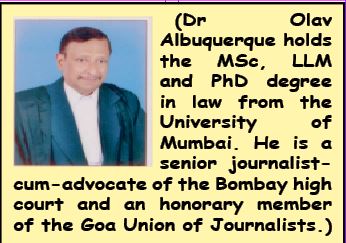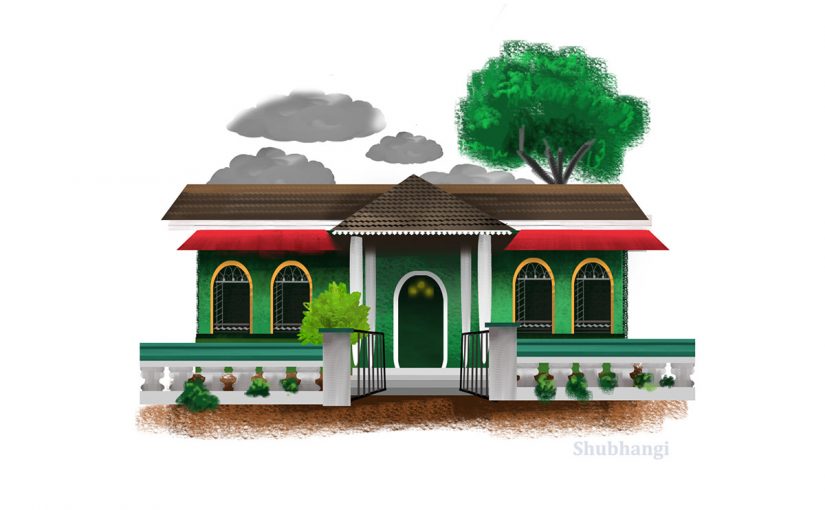By Dr Olav Albuquerque
PROTECTIVE homes are not always places where young girls improve. Sometimes, they deteriorate because some of those who supervise these children discharge their duties mechanically and nonchalantly without a passion for their job. Without going into unnecessary details, this is not the first time that the so-called protective homes have made the news for all the wrong reasons.
Three minor girls of which are rape victims, were kidnapped from the same so-called protective home but were immediately found without delay. But with the third not traced at the time of filing this article, questions have been raised on the standards being observed in these “protective” homes.
The Goa Police have registered offences under section 361 which states that taking a minor from the lawful custody of any authority amounts to kidnapping and carries a stiff punishment of seven years as this falls under the category of warrant cases which can be described as heinous crimes in layperson’s parlance.
In 1867, the British enacted the Reformatory Schools Act which was amended and consolidated in 1897 to set up what were later to be known as the Borstal schools throughout British India which prescribed free education so that a juvenile offender could earn his livelihood until he turned 21 years of age.
NOT PERFECT
THE Borstal Schools Act of 1929 was enacted by the British while in Goa, the Portuguese enacted schools were more-or-less in the same category. Whether it was in British India or Goa under Portuguese rule, the conditions in these protective homes were not perfect. With the departure of the British in 1947 and the expulsion of the Portuguese from Goa in 1961, all the protective homes were unified under one law so that children in conflict with the law were lodged in homes that were to train them in skills to enable them to earn their livelihood after they attained 18 or 21 years of age.
But to return to the escapees, the Margao police complained about one girl while the Colva police lodged a second complaint and the third was lodged by the Cuncolim police. From the facts obtained a 21-year-old youth by the name of Kumar from Muzaffarpur, Rajkhand, Bihar was arrested by the Cuncolim police for kidnapping a student. He was moving around with her for 160 days in Delhi along with the kidnapped girl.
He had kidnapped the student in March this year and was arrested by PSI Ravindra Velip and his team with the help of the Delhi police. PSI Kavita Rawat was investigating the case following a complaint lodged by the girl’s parents. The minor girl was sent to the Colva Protection Home while Vikram Kumar was arrested.
This girl who was kidnapped from the Protection Home was traced to her maternal home living with her mother. The second girl was sent there following a case registered by the Margao police station and after tracing her, she was sent to Apna Ghar which was in the news for the wrong reasons in 2012.
It was in that year that the Goa Police revealed that conspiracies to flee from the state-run observation home for children were hatched several times, through conversations on the popular social networking website, Facebook.
The children were accessing their Facebook accounts on mobile handsets given by their caretaker Videsh Mandrekar, whose own account showed a couple of conversations between him and one of the minors, who was being rehabilitated by an NGO.
The chats were primarily about planning escapes and knowing what was happening in the outside world. The very fact that even a gas-cutter was ordered through Facebook proved these children could not have escaped unless they received help from those who were supposed to have been supervising them. The gas cutter was used to cutting the grills so that the children could escape through the windows.
After escaping, these children were used by gangsters to commit robberies and murders. Several times, the police allege, these children returned to the shelter home after committing a crime, making it difficult for the police to solve the case.
In the 2012 case, Mandrekar was arrested. However, the police believe six more caretakers were involved in facilitating the escape of these juveniles. Cars were arranged through Facebook chats to help the children escape. This is why the use of mobile phones is banned by both the inmates and the staff of Apna Ghar.
But this has not stopped the rot that permeates some of these protective homes. The three things that a child must be taught are something to work for, something to hope for and someone to love.
While the first two are within reach, the third is not. But if these children are taught skills to enable them to earn their livelihood after turning 18 years or 21 years, they may get someone who loves them.

